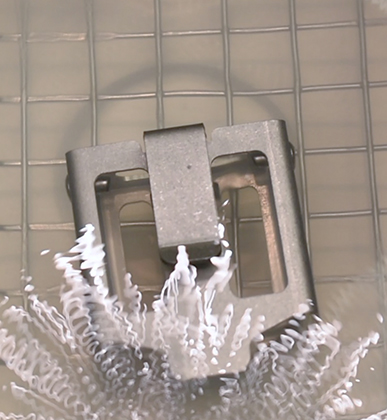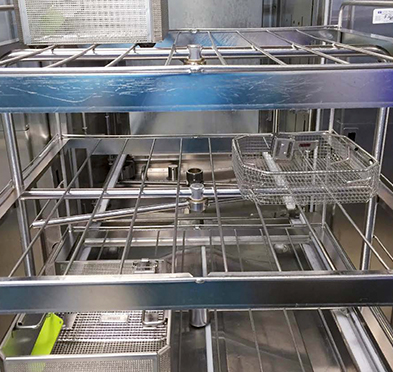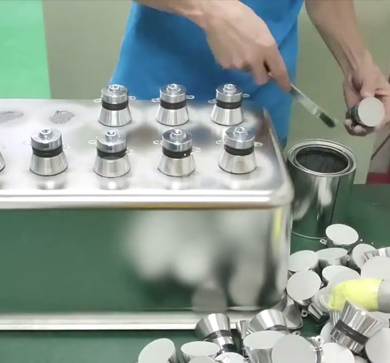
False Positives Create Disaster
In any simple science experiment, there is a positive and negative control. A positive control is predicted to be successful and a negative control on the other hand will always fail. Consider if your indicator, which is designed to monitor a process such as sterilization or cleaning effectiveness, is designed to have a successful outcome every time it’s used; how many true failures are missed. This is particularly concerning in health care settings where infection prevention and patient safety are our primary responsibilities.
Real Life Examples
A few times a month, I hear from a sales rep or a user about a failed wash indicator. It must be the indicator…can’t be our process and equipment. NO WAY!!! No one wants to learn that something is out of sync. This is especially troublesome when another indicator passes and our Case Soil indicator shows residue on the coupon, a failure. However, isn’t this what the indicator is supposed to do, alert us when something is wrong?
In the Ultrasonic
Recently an account tested their washer and sonic with a competitor’s wash indicator having a plastic cover containing a metal coupon with protein or fibrinogen soil only. It passed. Their current indicator was clean and shiny. Then when ours was trialed in the same ultrasonic a white residue with film was observed on the coupon. Oh my gosh…what’s wrong? Using the Case Soil indicator troubleshooting guide it was determined with a brief investigation that rinsing did not occur in the ultrasonic and water quality issues existed. They were using RO water in their washer for rinsing but not in the ultrasonic. In fact, there was no rinse at all. I recall another scenario where no detergent was being pulled. The Case Soil indicator did what it was supposed to do. Residue remained on the coupon, a failure that now can be corrected.


In the Washer
On another occasion, an account was using the same competitive product for two weeks and the indicators cleared every time. Nonetheless four of our Case Soil indicators failed after only one try. According to our representative, when the staff inspected and disassembled the spray arms, they were completely shocked to find debris on all areas of the spray arms and an excessive amount of debris on the towel they used to collect the debris. “To my surprise and theirs, after we removed the gunk and reassembled the spray arms, everything passed. Every Case Soil indicator was clear.” FYI: Placing the Case Soil indicator under each spray arm of the automated washer locates the problem at the specific location. Check the troubleshooting guide for directions.
For Troubleshooting Transducer Failures
One more example, an account used our Case Soil wash indicator in the sonic, placing one in its holder at center point for routine monitoring and observed a failure. They didn’t recall when their last transducers were replaced or serviced. We recommended that they place four Case Soil indicators on all four sides of the sonic to troubleshoot the problem. Sure enough, they were able to identify which transducer needed replacement based upon a failure of the Case Soil indicator on one of the four sides. Please remember to do routine inspection on the ultrasonic. Transducers may last six months or a year or less depending on the frequency of use.

Our white wipe test
At Case Medical, we create products that in themselves can be an indicator of successful outcomes. Our process indicators go from light to dark. Our single use wipes are initially white and any soil collected from the surface of devices can be seen. For example, rather than multi-colored, messy and drippy sponges that disguise residue, nonetheless promoted to wipe down endoscopes, our Endo-Bedside Kit contains a single use wipe that is white in color, no disguise here. You will know right away that the gross soil on your endoscope is gone when the last wipe is white.
The white "glove" test
Consider another product, our CSR ink and adhesive remover, that can be used routinely to remove permanent ink and adhesive residue from single use labels. This same product can be used to ensure that the surface integrity of the sterilization container or tray is intact. Simply apply a mark on the surface of your aluminum tray or container, with a Sharpie, wait a moment or two until it dries, then try to remove with the CSR applied to a soft cloth. If a mark or even a shadow of a mark remains, the anodized or passive layer of the device has been compromised. If it wipes clean, wash and rinse and now put it back into service with the assurance that it is safe to use.
Case Medical looks for practical solutions to everyday problems. Continue reading our blogs for more information about effective monitoring and infection prevention.
Case Medical is a U.S. EPA Safer Choice Partner of the Year and here to help you solve problems with sustainable and validated products and services.
Case Medical is a U.S. EPA Safer Choice Partner of the Year and here to help you solve problems with sustainable and validated products and services.
Visit us anytime at www.casemed.com to learn more about our products and services. We are here to help. Case Medical is a U.S. EPA SAFER CHOICE Partner or the Year for Manufacturer Formulator and recognized in NJ as Innovative Manufacturer of the Year.
Kindest Regards,





